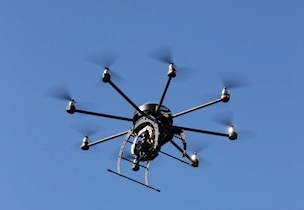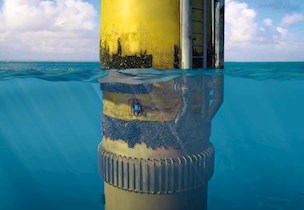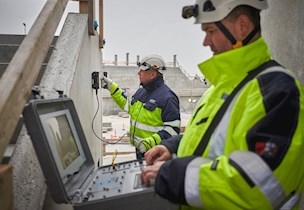Drone inspection of offshore oil and gas constructions
Drone inspection makes it possible to access areas of oil and gas constructions that otherwise may pose health, safety and environmental risks in a fast and safe way.
Only experts ought to analyse data
During the aerial inspection, a FORCE Technology pilot operates the drone. During the flight, our certified NDT personnel usually operate the camera, record video and direct the pilot to the points of special interest and views of different angles of the construction.Under normal circumstances, the drone inspection itself is quickly finished. The heavy workload lies in the analysis of the collected data, and the pictures taken by the drones. It is essential here to enlist relevant experts in analysis to obtain the full value from a drone inspection.
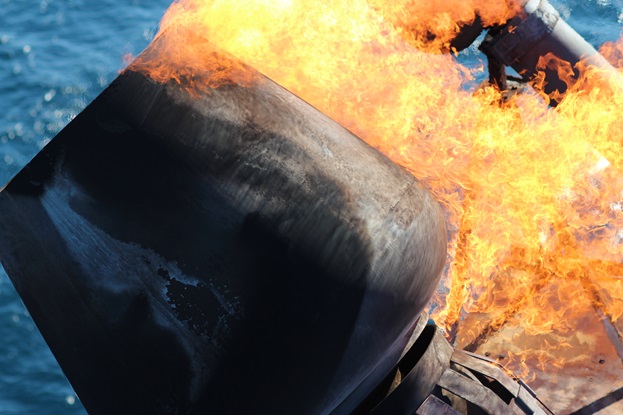
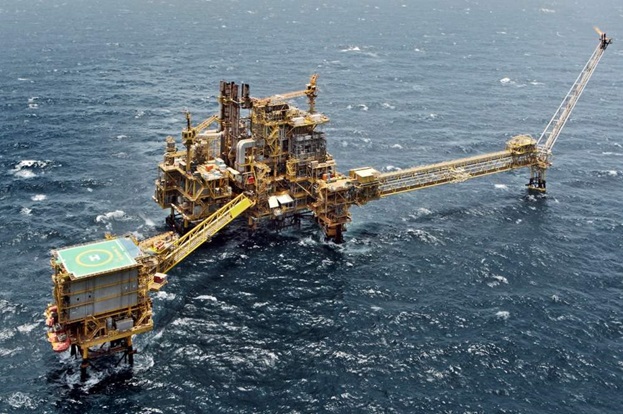
Someone lacking the necessary qualified experience may overlook a critical defect or fault, possibly with fatal consequences. For instance, an inspection concerning a steel construction requires an expert metallurgist to analyse and interpret the data.
An inspection report is produced, based on the analysis of this data, and is usually divided into categories of red, yellow and green priority according to the seriousness of the damage. This report can if needed include a service plan, with recommendations to cost-effective improvements.
At FORCE Technology, we only use drones when it is the optimal solution. Based on our extensive experience with and knowledge of all types of inspection, we always offer the best solution, tailor made for the job – with or without a drone.
UAV of offshore oil and gas towers and flares
The offshore environment is often regarded as tough and demanding, where it is vital to keep faults as well as loss of production at both the installation and the inspection equipment to a minimum.
Drone inspection enables both pilot and NDT personnel to distance themselves from the danger zones, making safe inspection of high risk areas possible. Furthermore, detailed images of critical components can be obtained, without shutdown or disturbance of the production process.
One example of an assignment containing these elements is inspection of the flare and the flare tower on an oil/gas platform with an active flare. Here the drone collects images or thermographic data of critical components on the flare and the flare tower, while production continues unaffected.
The data collection takes place in a turbulent and flame-filled environment, whilst the drone pilot, inspector and employees are at a safe distance from the inspection area.
Bridge inspection by drone
FORCE Technology’s inspection drone is capable of viewing an item at any angle between +45° up and 90° down. The drone’s ability to look up is particularly useful when inspecting bridges offshore. Flying underneath the bridge and inspecting for corrosion etc. without the cost of e.g. a rope access team makes aerial inspection an attractive alternative.
Drone inspection of offshore constructions
Visual inspection by an unmanned drone is a quick and cost effective inspection method of critical areas on onshore and offshore constructions. Drone inspection enables access to otherwise inaccessible structures and details, offering immediate action as an alternative to more traditional, time consuming and costly inspection methods like rope access, sky-lifts, cherry pickers and scaffolding.
Aerial inspections can be applied anywhere outdoor, indoor and offshore. Any limitations from national or local regulation must be taken into account. Furthermore, any safety procedures of the facility owner must be complied with.
The use of drones for visual inspection provide benefit such as:
- quick overview and evaluation of hard to reach areas
- preventive maintenance planning and optimised production
- access to areas that pose health, safety and environmental risk to humans
- high level of safety for personnel
- high quality images and video - sharp and detailed photographs of defects
- quick on-site deployment of the drone inspection system
- authorized and qualified UAV-inspection personnel
- reduced downtime.
We meet these challenges by using powerful LED lamps, thus ensuring good picture quality with true, natural colours, as well as using specialised equipment and experienced pilots who can predict areas with high risk of turbulence.
The quick deployment time and ability to either screen a whole area or quickly get details of specific sections make drone inspection ideal for time critical inspection.
The data provided by the drone inspection can significantly improve the maintenance planning, as it can be used to reduce maintenance related downtime and costs.
Refineries – storage tanks and confined spaces
Drone inspection of boilers, fuel storage tanks and confined spaces at power plants, refineries and other industrial plants is becoming commonplace. Here visual inspections are advantageous as it often is too expensive or time consuming to set up scaffolding, or too hazardous for physical inspection.
There are though considerable challenges when using drones in confined spaces, these include lack of proper lighting, colour nuances, radio signal reflection and propeller turbulence.


